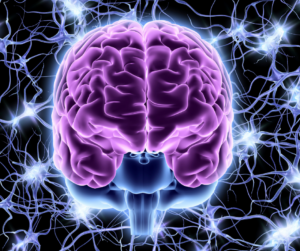It has been well researched that childhood trauma can lead to addictions and other relational and psychological problems later in life. In fact, trauma pre-wires our brains for addiction according to addiction counselor and mental health therapist Ed Khouri. Ed was recently featured on an episode of the Recovery and Company Podcast where we discussed attachment theory, addiction, and family dynamics.
Attachment is something that begins forming from the time we are born and is measurable from the time we are about 2 ½ years old. Our attachment style determines how we connect with people that are important to us and the world around us. A secure attachment “means we are able to switch back and forth between high energy states and quieting states with primary care givers. It means we do serotonin and dopamine regulation well,” says Khouri.
 If our primary relationship with our caregiver was mostly positive and our physical and emotional needs were met with consistency we will develop a secure attachment style. If, however, our needs were not met, or met inconsistently, or we experienced abuse or trauma, we will most likely develop an insecure attachment style:
If our primary relationship with our caregiver was mostly positive and our physical and emotional needs were met with consistency we will develop a secure attachment style. If, however, our needs were not met, or met inconsistently, or we experienced abuse or trauma, we will most likely develop an insecure attachment style:
“Interactions with attachment figures who are available in times of need, and who are sensitive and responsive to bids for proximity and support, promote a stable sense of attachment security and build positive mental representations of self and others. But when a person’s attachment figures are not reliably available and supportive, proximity seeking fails to relieve distress, felt security is undermined, negative models of self and others are formed, and the likelihood of later emotional problems and maladjustment increases” (Mikulincer & Shaver, 2012).
It is during the critical early developmental years that “a baby’s brain is becoming organized and learning to regulate important neurotransmitters, developing the way it will tend to connect with other people throughout our life time,” says Khouri.
Attachment theory predicts that a secure attachment will allow for healthy emotional and psychological functioning later in life. There are three non-secure attachment styles that can negatively impact us throughout our life.
 Avoidant
Avoidant
An avoidant attachment style is where “our nervous system learns to undervalue the importance of relationships and emotions,” says Khouri. “We tend to do life and relationships at a distance.”
Anxious
If we have developed and anxious attachment style we tend to “overvalue the importance of emotions and relationships” says Khouri. “Our nervous system is always on high alert for the opportunity to connect or share emotions with others.”
Disorganized
Disorganized attachment style is the one most associated with abuse, trauma or neglect. Individuals with this type of attachment style will desire close relationships but fear them at the same time which can result in extreme unpredictability in relationships. This attachment style is the one most correlated with developing addictions later in life.
 According to Khouri there are two types of trauma that can cause insecure attachment styles. There is trauma A which is “the absence of the good and necessary things we need for healthy attachments. Trauma B is the presence of bad things we don’t need. Addiction is generally associated with a combination of trauma A and B.”
According to Khouri there are two types of trauma that can cause insecure attachment styles. There is trauma A which is “the absence of the good and necessary things we need for healthy attachments. Trauma B is the presence of bad things we don’t need. Addiction is generally associated with a combination of trauma A and B.”
As our brain is developing early in life our attachments are forming at the same time. These negative experiences can lead to chemical imbalances that cause many of the psychological disorders we know about today. This in turn can lead us to ‘self-sooth’ with addictive substances later in life. This is particularly true if there is an existing genetic or environmental pre-disposition to addiction.
“According to attachment theory, interactions with inconsistent, unreliable, or insensitive attachment figures interfere with the development of a secure, stable mental foundation; reduce resilience in coping with stressful life events; and predispose a person to break down psychologically in times of crisis. Attachment insecurity can therefore be viewed as a general vulnerability to mental disorders, with the particular symptomatology depending on genetic, developmental, and environmental factors” (Mikulincer & Shaver, 2012).
 The reason trauma pre-wires the brain for addiction, is that when we experience trauma A or trauma B “our brain is still at a level way below consciousness looking for an external attachment to help it regulate neurotransmitters,” says Khouri. “The fact that we may not have had that does not mean the brain stops looking. One of the real problems with trauma is the brain is looking for a reliable means of dopamine regulation which means we live in a normal level of pleasure. If I experience trauma A or trauma B to significant degrees, life just does not feel like a good place to me, maybe an unsafe place, but it’s still looking for something it can attach to center it to do that regulation for it. Drug addictions of all kinds, almost all of them trigger the release of dopamine.”
The reason trauma pre-wires the brain for addiction, is that when we experience trauma A or trauma B “our brain is still at a level way below consciousness looking for an external attachment to help it regulate neurotransmitters,” says Khouri. “The fact that we may not have had that does not mean the brain stops looking. One of the real problems with trauma is the brain is looking for a reliable means of dopamine regulation which means we live in a normal level of pleasure. If I experience trauma A or trauma B to significant degrees, life just does not feel like a good place to me, maybe an unsafe place, but it’s still looking for something it can attach to center it to do that regulation for it. Drug addictions of all kinds, almost all of them trigger the release of dopamine.”
 Khouri calls these negative attachments BEEPS which stands for Behaviors, Events, Experiences, People, or Substances that our attachment center latches onto instead of genuine, joyful relationships. “BEEPS highjack the brains attachment center,” says Khouri. “When they do, because it is at such a deep and unconscious level, it tends to direct and steer the whole course of the brain and trauma is what sets us up for that. The more our brain latches onto BEEPS the more likely we are to turn away from genuine caring relationships. The brain has been hijacked so healthy stuff has less appeal because it’s getting it’s needs met through its primary attachment to whatever we are addicted to.”
Khouri calls these negative attachments BEEPS which stands for Behaviors, Events, Experiences, People, or Substances that our attachment center latches onto instead of genuine, joyful relationships. “BEEPS highjack the brains attachment center,” says Khouri. “When they do, because it is at such a deep and unconscious level, it tends to direct and steer the whole course of the brain and trauma is what sets us up for that. The more our brain latches onto BEEPS the more likely we are to turn away from genuine caring relationships. The brain has been hijacked so healthy stuff has less appeal because it’s getting it’s needs met through its primary attachment to whatever we are addicted to.”
The good news in all this is that our attachment style is not ‘set’ for life. Through recovery, therapy, learning, and even experiencing healthy relationships we can develop a secure attachment style.
“When researchers were doing all their studies on attachment, the model predicted once you formed an attachment style by 2 ½ it would remain that way throughout your life time, but in long term studies they began to see something changed because some people were becoming more securely attached,” says Khouri. “They went back and studied it and what they concluded is that if you are a person with a more non-secure attachment style, if you are in a long-term relationship or form an attachment with someone who has a more secure attachment style than you do, your attachment style will tend to start changing. But it’s over time, it’s not a quick fix. Other people are absolutely critical for that to happen. The brain needs an external reference point that in effect becomes a new primary person that is going to help me learn to regulate and learn to help me do life. If people are willing to do the work in those relationships, they will find that attachment styles do change.”
Mikulincer, M., & Shaver, P. R. (2012). An attachment perspective on psychopathology. World psychiatry : official journal of the World Psychiatric Association (WPA), 11(1), 11–15. https://doi.org/10.1016/j.wpsyc.2012.01.003
